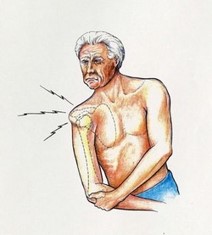
STROKE REHABILITATION
Stroke rehabilitation is a crucial aspect of stroke care, focusing not only on immediate recovery but also on long-term well-being. Comprehensive programs with adequate resources, tailored to individual needs, are essential for optimal recovery.
Here’s an overview of the key components of effective stroke rehabilitation:
The Rehabilitation Program
A structured rehabilitation program is the cornerstone of stroke recovery. These programs are designed to help patients regain as much independence as possible and improve their quality of life. Research shows that patients discharged to inpatient rehabilitation centers have higher rates of functional recovery and are more likely to return to community living.
Prevention and Medical Management of Comorbidities
Managing comorbid conditions is vital to prevent further complications and promote overall health. Key areas of focus include:
|
I. Skin breakdown and contractures |
|
II. Bowel and bladder incontinence (Problems with passing stool and urine) |
|
III. Hemiplegic shoulder pain (Pain over the shoulder) |
|
IV. Central pain (Generalized pain) |
|
V. Fall prevention |
|
VI. Depression |
|
VII. Post stroke Osteoporosis (High chance of fractures) |
Sensorimotor Impairments and Activities
Addressing sensorimotor impairments is critical for restoring movement and function. This involves therapy for the following:
|
I. Dysphagia (Difficulty swallowing) |
|
II. Cognitive impairments (Difficulty understanding) |
|
III. Hemispatial neglect (Ignoring one half of the body) |
|
IV. Communication disorders (Inability to speak/understand) |
|
V. Spasticity (Tightness of all muscles) |
|
VI. Balance and ataxia (Difficulty walking and balancing) |
|
VII. Mobility |
|
VIII. Upper extremity activity |
|
IX. Adaptive equipment (Aids for helping daily activities) |
|
X. Deconditioning after stroke |
|
XI. Visual impairments (Difficulty seeing) |
|
XII. Hearing loss (Difficulty hearing) |
Transitions in Care and Community Rehabilitation
Effective transition from hospital to home is crucial. Community-based rehabilitation, including early supported discharge, can reduce hospital stays and readmission rates, and enhance functional independence. Key aspects include:
|
Social and family caregiver support |
|
Community based rehabilitation |
|
Sexual function |
|
Return to work |
Conclusion
Stroke rehabilitation requires a multi-faceted approach tailored to each individual's needs. By focusing on comprehensive programs, managing comorbidities, addressing sensorimotor impairments, and ensuring smooth transitions in care, patients can achieve significant improvements in their recovery journey and quality of life.
We at PMR Centre, have a team of trained professionals who will help you through this journey. For more details, please feel free to contact us at 0364-3500264 or +91 7085235036. You can also email us at info@pmrcentre.com.
We are here to make your journey an easier one.
